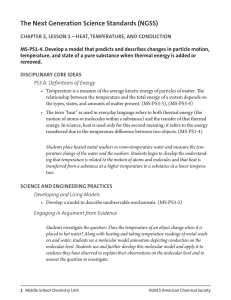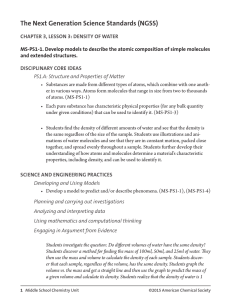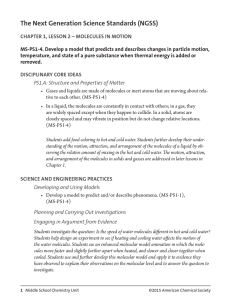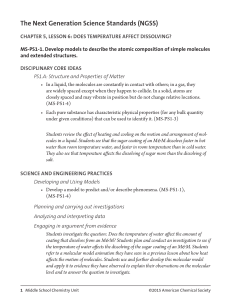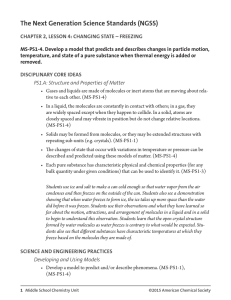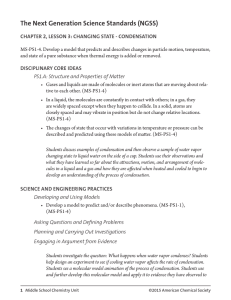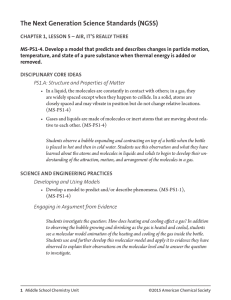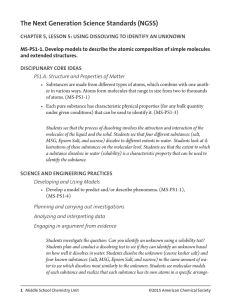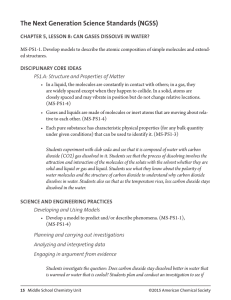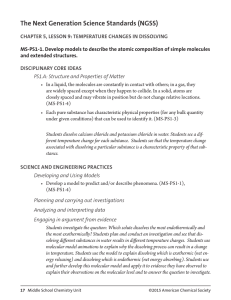The Next Generation Science Standards (NGSS)
advertisement
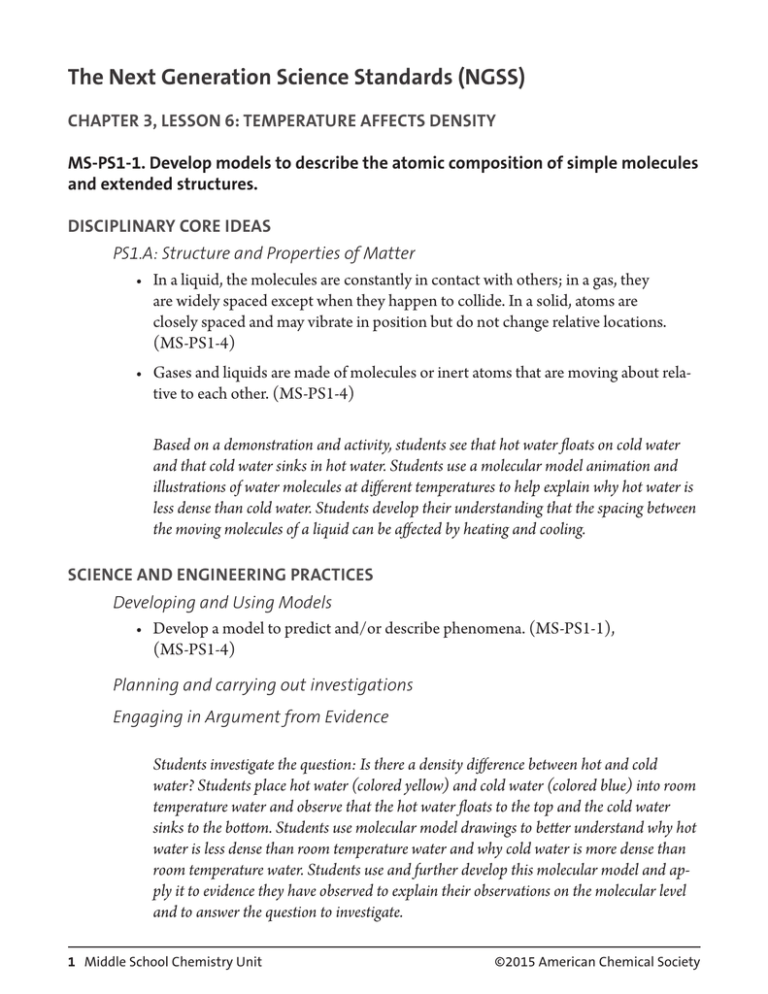
The Next Generation Science Standards (NGSS) CHAPTER 3, LESSON 6: TEMPERATURE AFFECTS DENSITY MS-PS1-1. Develop models to describe the atomic composition of simple molecules and extended structures. DISCIPLINARY CORE IDEAS PS1.A: Structure and Properties of Matter • In a liquid, the molecules are constantly in contact with others; in a gas, they are widely spaced except when they happen to collide. In a solid, atoms are closely spaced and may vibrate in position but do not change relative locations. (MS-PS1-4) • Gases and liquids are made of molecules or inert atoms that are moving about relative to each other. (MS-PS1-4) Based on a demonstration and activity, students see that hot water floats on cold water and that cold water sinks in hot water. Students use a molecular model animation and illustrations of water molecules at different temperatures to help explain why hot water is less dense than cold water. Students develop their understanding that the spacing between the moving molecules of a liquid can be affected by heating and cooling. SCIENCE AND ENGINEERING PRACTICES Developing and Using Models • Develop a model to predict and/or describe phenomena. (MS-PS1-1), (MS-PS1-4) Planning and carrying out investigations Engaging in Argument from Evidence Students investigate the question: Is there a density difference between hot and cold water? Students place hot water (colored yellow) and cold water (colored blue) into room temperature water and observe that the hot water floats to the top and the cold water sinks to the bottom. Students use molecular model drawings to better understand why hot water is less dense than room temperature water and why cold water is more dense than room temperature water. Students use and further develop this molecular model and apply it to evidence they have observed to explain their observations on the molecular level and to answer the question to investigate. 1 Middle School Chemistry Unit ©2015 American Chemical Society CROSSCUTTING CONCEPTS Cause and Effect • Cause and effect relationships may be used to predict phenomena in natural or designed systems. (MS-PS1-4) Scale, Proportion, and Quantity • Time, space, and energy phenomena can be observed at various scales using models to study systems that are too large or too small. (MS-PS1-1) Students use molecular-level models of hot, room-temperature, and cold water to explain how these sub-microscopic characteristics affect the macroscopic observation that hot water floats on room- temperature water and cold water sinks in room-temperature water. 2 Middle School Chemistry Unit ©2015 American Chemical Society

